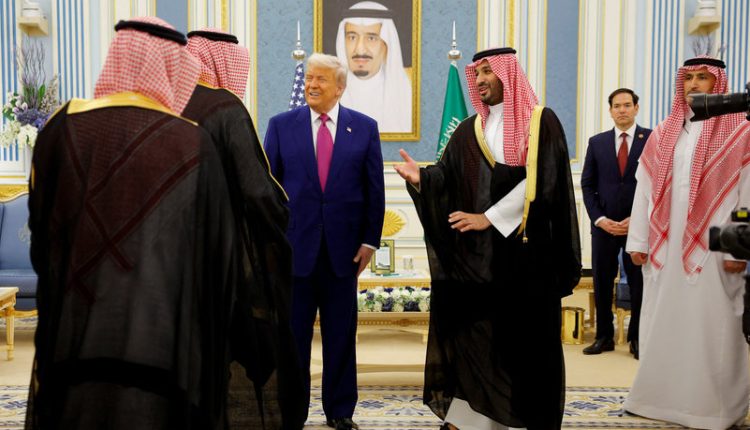Saudi Arabia, U.S. Sign Strategic Economic Partnership as Trump Begins Gulf Tour
By Kardo Roj
RIYADH, Saudi Arabia (North Press) – Saudi Crown Prince Mohammed bin Salman and U.S. President Donald Trump signed a strategic economic partnership agreement in Riyadh on Tuesday, marking a major step in U.S.-Saudi relations amid Trump’s first international trip following his re-election.
The signing ceremony, held at Al-Yamamah Palace, was the centerpiece of a high-profile state visit that included full ceremonial honors for the American president. Trump’s arrival was marked by a royal welcome featuring the Saudi national anthem and the U.S. national anthem, underscoring the significance both sides place on revitalizing bilateral ties.
The agreement aims to bolster economic cooperation across multiple sectors, including energy, defense manufacturing, infrastructure development, and technology, according to initial briefings by Saudi and U.S. officials.
Strategic Ties Reaffirmed
The deal comes at a time of shifting geopolitical dynamics in the Middle East, with both Washington and Riyadh seeking to navigate regional tensions, energy transition policies, and evolving security landscapes. While specific details of the partnership were not made public, Saudi officials described it as “comprehensive” and designed to advance mutual long-term interests.
Observers note that the agreement could pave the way for renewed U.S. investment in Saudi Vision 2030 projects, as the kingdom accelerates efforts to diversify its economy away from oil dependency. For Washington, the deal strengthens its strategic foothold in the Gulf as part of broader efforts to stabilize the region and counter emerging influences.
Trump’s Gulf Tour: Regional Expectations High
President Trump’s visit to Saudi Arabia marks the first stop in a wider tour that will include Qatar and the United Arab Emirates. The trip is being closely followed across the region, particularly as speculation grows around Trump’s potential role in facilitating new diplomatic arrangements or reshaping existing U.S. policy positions.
In particular, attention has turned to reports of possible engagement between Trump and Syria’s transitional leadership, as well as discussions surrounding regional normalization with Israel. Though the U.S. State Department has downplayed the likelihood of a direct meeting between Trump and Syrian President Ahmad al-Sharaa, analysts believe the visit could still influence Syria-related diplomacy behind closed doors.
Trump’s remarks earlier this week on possibly easing sanctions on Syria—reportedly at the request of Turkish President Recep Tayyip Erdoğan—have further heightened interest in the broader implications of his regional outreach.
Broader Regional Implications
The strategic agreement with Saudi Arabia may also set the tone for Trump’s engagements with other Gulf leaders. Both Qatar and the UAE have previously signaled interest in deepening economic and defense ties with the U.S., particularly in light of growing global economic uncertainty and increased regional assertiveness from non-Arab actors.
The Gulf tour is widely viewed as an attempt to reinvigorate the American role in a region where diplomatic power plays, energy politics, and security alignments are in flux. With the ongoing conflict in Gaza, unresolved crises in Syria and Yemen, and fragile negotiations around Iran’s nuclear ambitions, Washington’s influence remains a key variable in the Middle East equation.
Northeast Syria Watches Developments Closely
For the Autonomous Administration of North and East Syria (AANES), developments involving U.S. policy in the region carry significant weight. The SDF, a primary counterterrorism partner of the U.S. and the security backbone of northeast Syria, has long advocated for stable international engagement that supports political resolution and sustainable governance in Syria.
While the strategic economic deal signed in Riyadh does not directly involve Syria, shifts in regional diplomacy and potential U.S. realignments could have indirect impacts on the political landscape, including the future of AANES-administered regions.

